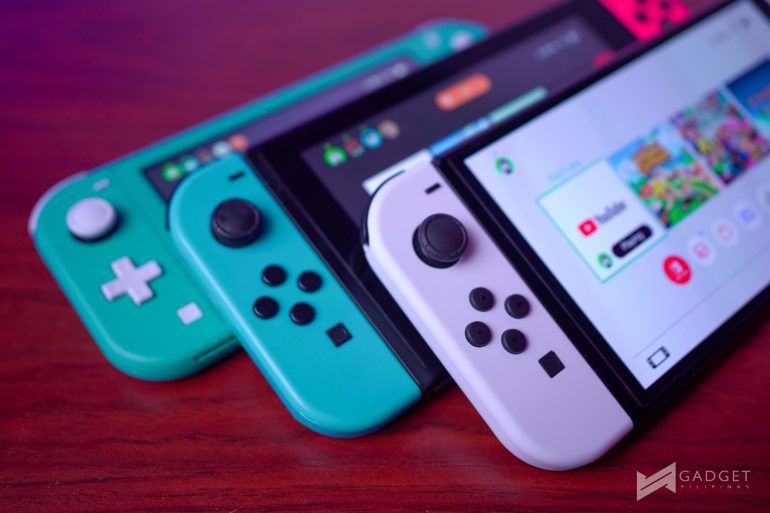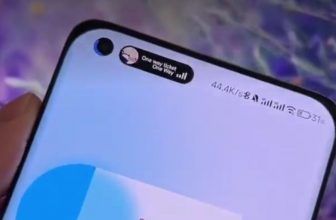If you’re choosing among three Nintendo Switch versions available in the market right now, which one should you choose? Should you get the new Switch OLED, the smaller Switch Lite, or the classic-looking Nintendo Switch! I have all these devices so I should be able to give you some insights into how each console performs. Let’s also dive into the various differences of the devices, and allow me to help you in your purchase decision.
Before I get into the details, allow me first to quickly give you unboxing details of the Nintendo Switch OLED that I recently bought from Datablitz. Shout out to Datablitz for the very easy same-day transaction over their website.
When you buy the Nintendo Switch OLED, you’ll notice that its box is oriented differently compared to previous Switch boxes in the past. It is now designed vertically, and flipping up the flap of the box reveals the new Switch and two Joy-Cons. I bought the white colorway as I wanted something that sets it apart from other Nintendo Switch consoles.
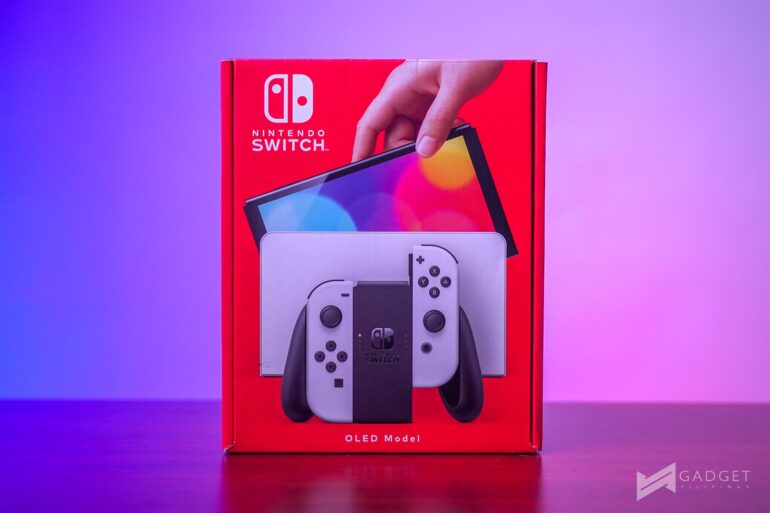
Lifting the container where the console and controllers are placed will reveal the other accessories like the newly-designed and better dock with LAn port, joy-con grip, Joy-Con strap charger, and a few documentations.
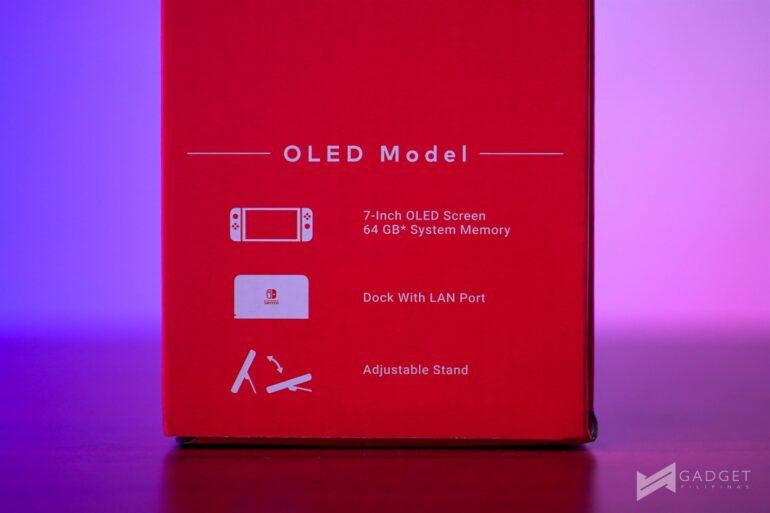
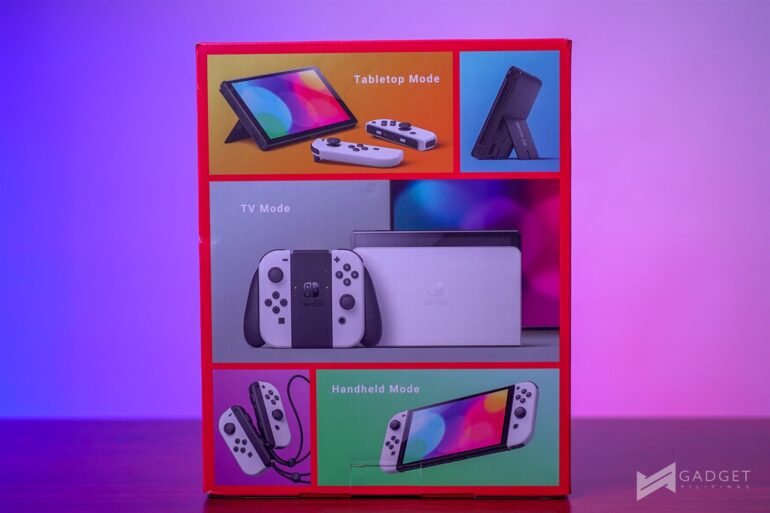
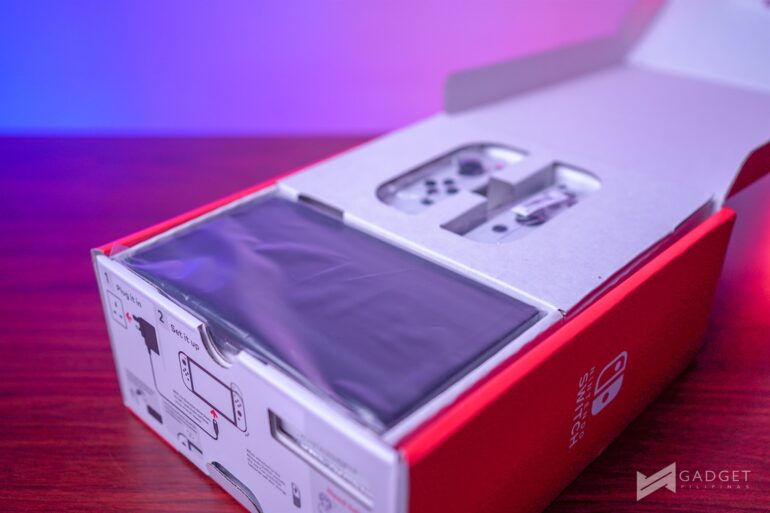
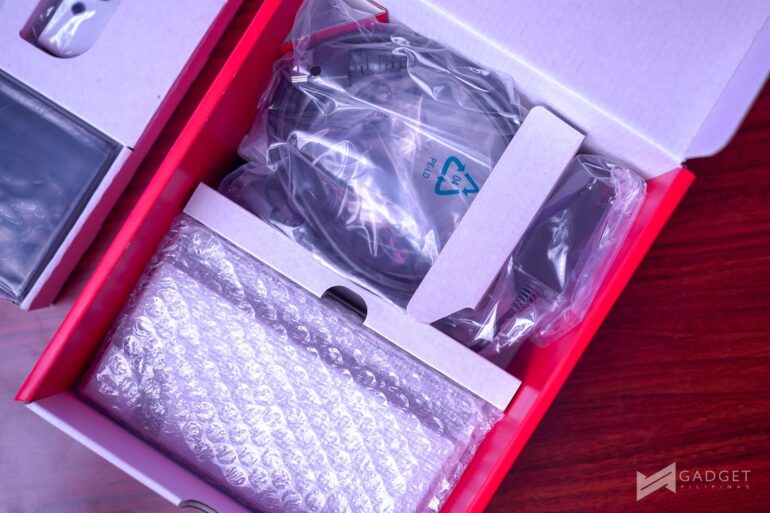
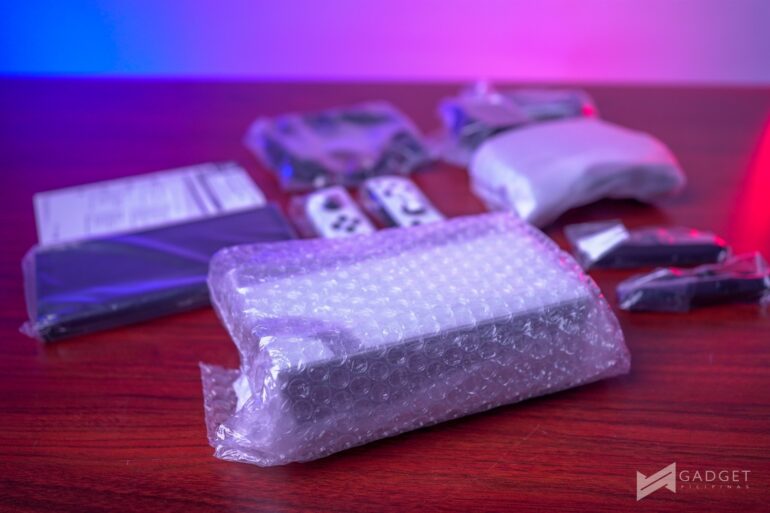
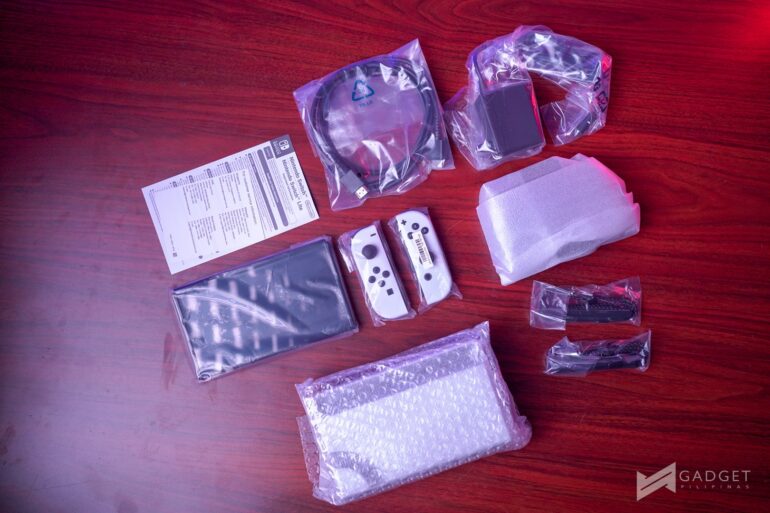
Since I am planning to let go or hand over my old Switch to my wife, Nintendo made it easy for me to transfer saves and even my Animal Crossing New Horizon island to the new Switch OLED. It took me about 3 hours to download and install my favorite games and transfer my Animal Crossing to the new Switch.
Enough of the unboxing and setup process; let’s now proceed to specs comparison. To make things easier for you to know the differences among the 3 variants, check out the table below:
Specs Comparison
| Nintendo Switch | Nintendo Switch Lite | Nintendo Switch OLED | |
| Display | 6-inch LCD, 720p, 60 Hz | 5.5-inch LCD, 720p, 60Hz | 7-inch OLED, 720p, 60 Hz |
| Dimensions | 9.4 x 4.0 x 0.6 inches | 8.2 x 3.6 x 0.6 inches | 9.4 x 4.0 x 0.6 inches |
| Weight | 14.1 ounces | 9.8 ounces | 14.9 ounces |
| Battery LIfe | 4.5 -9 hrs | 3 – 7 hrs | 4.5 – 9 hrs |
| Chipset | Custom Nvidia Tegra X1 | Custom Nvidia Tegra X1 | Custom Nvidia Tegra X1 |
| RAM | 4GB | 4GB | 4GB |
| Storage | 32 GB | 32 GB | 64 GB |
| Dock | Yes | No | Yes, with improved dock |
| Joy-Cons | Yes | Yes, non-detachable | Yes |
| Color Options | Gray / Red, Blue and Black | Gray / Yellow / Pink / Turquoise / Purple | Black and White / Red, Blue and Black |
| Price | PhP15,395 | PhP9,850 | PhP19,999, but sold as bundle in PH for as low as PhP23,950 |
Overall Console Design
No Nintendo Switch variant is similar as Nintendo has done so in the past with their Gameboy, DS, and 3DS consoles. For Nintendo Switch, the one I bought in Japan in 2018 is designed differently from Switch Lite and Switch OLED. However, despite the design differences, putting them all side by side would easily make people understand that they are utterly made by the same company and under the line-up.
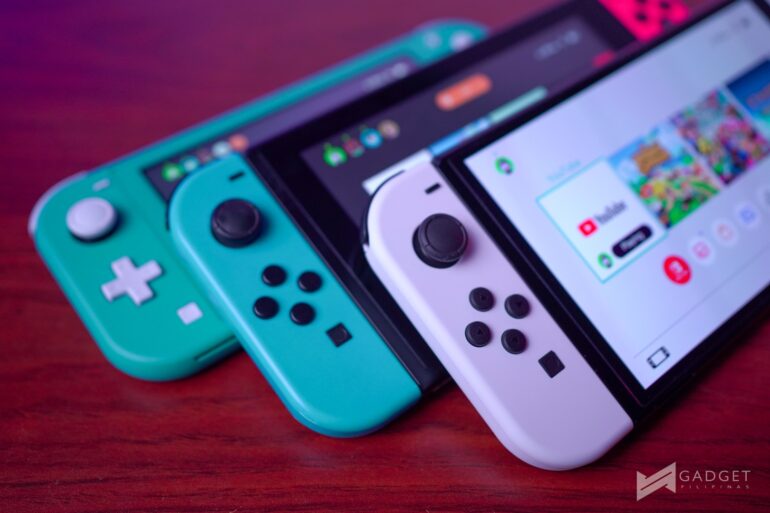
The first and new Switch OLED have uncanny similarities in terms of design. You have the usual display in the middle, and joy-cons attached on both side. There are, however, notable differences that you should take note of.
For starters, Switch OLED has a better and bigger display. I’ll talk more about the display later. The new bigger screen real estate of the new Switch, however, did not increase the size of the device. If you compare this to the older Switch, screen bezel is less pronounced on the new Switch. The thinner bezel has been taken over by its bigger display.
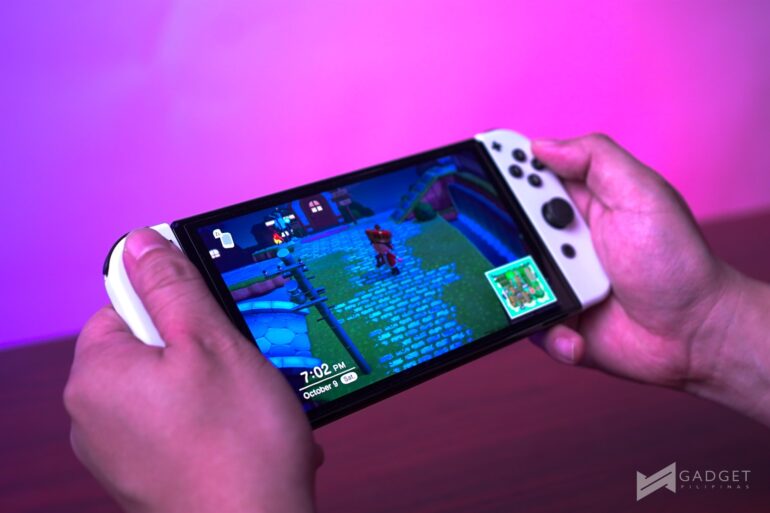
There is a slight redesign of the two speakers located just below the new Switch OLED’s display. Air vents at the back have been changed as well. Perhaps the biggest changed at the back of the console is the new kickstand, which is now sturdier and wider compared to the flimsy version of the first Nintendo Switch. The kickstand can now be set up in various ways, which makes the Nintendo Switch a very flexible gaming and entertainment device. This reminds me that the only entertainment applications that are missing on the new Switch right now are Netflix and Disney Plus (which is rumored to come to the Philippines this quarter or next year). In relation to this, the Micro SD slot had been relocated as well.
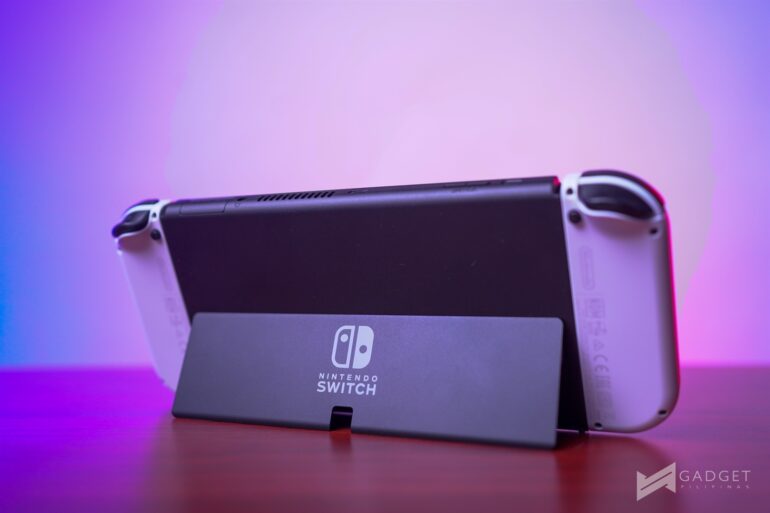
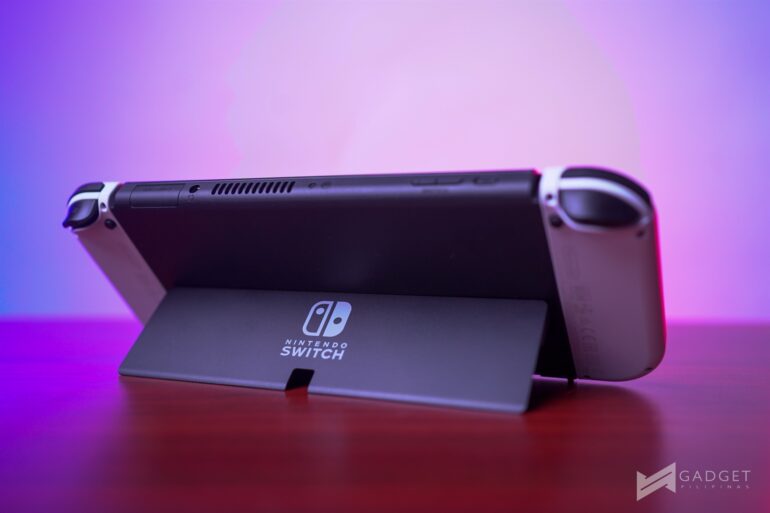
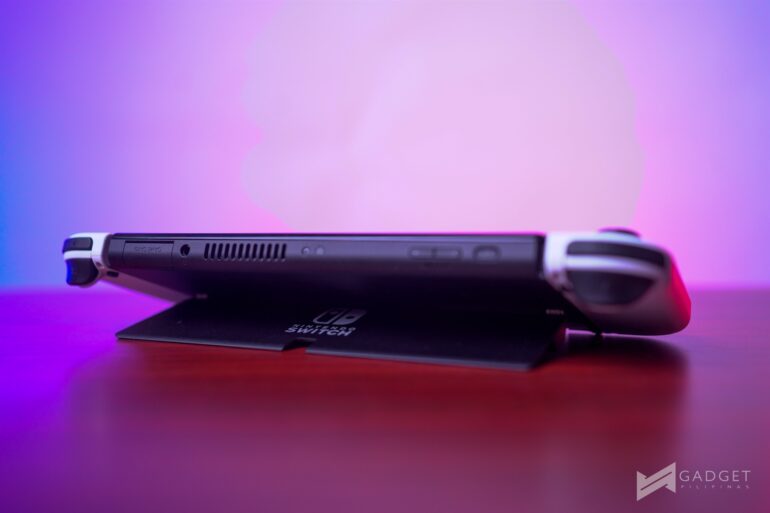
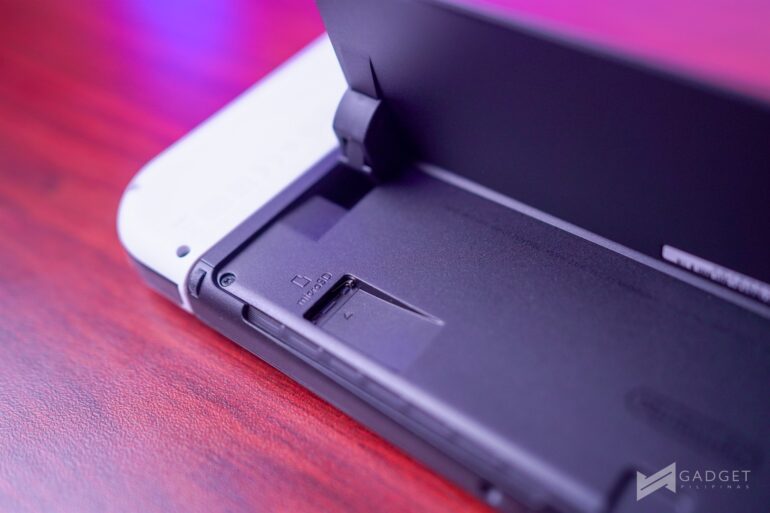
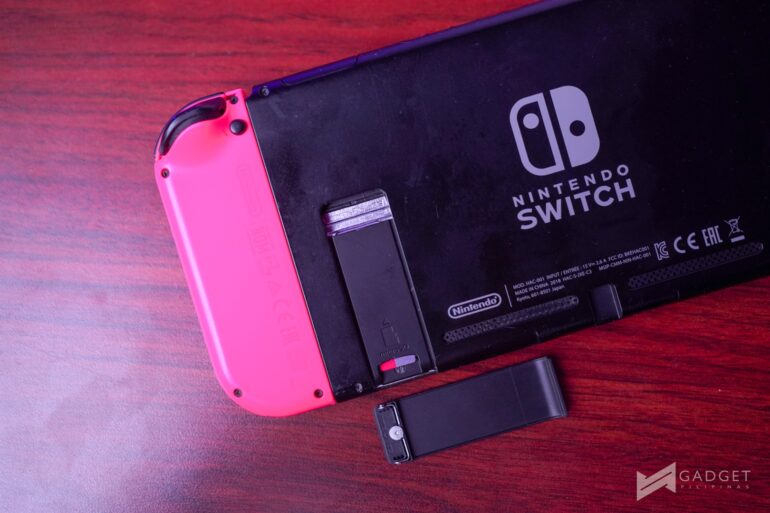
The sizes and designs of joy-cons are the same. In fact, you can use your old joy-cons to the Switch OLED, or use the new ones to the first Nintendo Switch. While I hoped for improved and joy-con drift-proof controllers, it seems that these ones are exactly the same joy-cons available in the market right now.
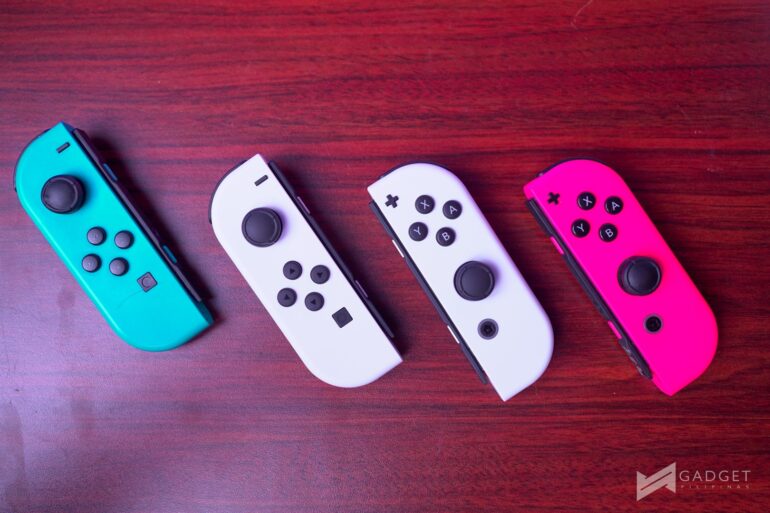
Switch Lite, on the other hand, is a different breed and was designed primarily for enthusiasts and younger gamers. It is smaller in terms of overall build, and the display is much smaller compared to the classic and OLED versions.
I bought one for Matteo last year, so I have an Animal Crossing island to visit or play other games with. You get non-detachable joy-cons; and the console may neither be docked nor be connected to a TV. This means that when you buy this model, you’re left off with handheld mode.
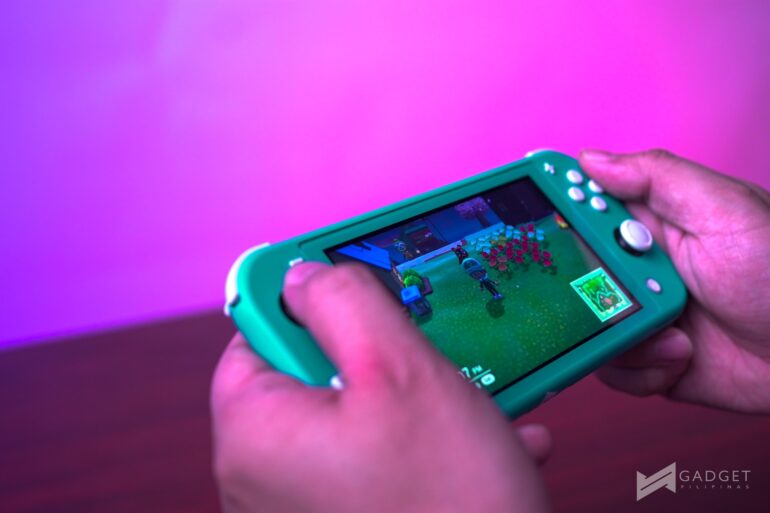
If design is your primary consideration, which can be the case for a lot of people, I recommend the Switch OLED for those who want to play games in handheld or tabletop modes with bigger displays. The classical Switch, however, is for those who do not mind a bigger display in exchange for PhP5,000 savings versus the Switch OLED. Nintendo Switch, on the other hand, is perfect for kids or for those who do not mind playing games in handheld mode.
Display
One of the biggest changes in the new Switch is its OLED display. If you want nerdy information, the difference between LCD and OLED displays is that the latter does not have a backlight. Each pixel and image displayed on the new Switch OLED is light-emmited. This relatively new technology (although it has been around and available in most consumer smartphones and laptops), makes the new Switch the first Nintendo handheld console to sport an OLED display. This makes images and pixels display on the screen very accurate, sharp, and vibrant. As previously mentioned, the display of Switch OLED is bigger too.
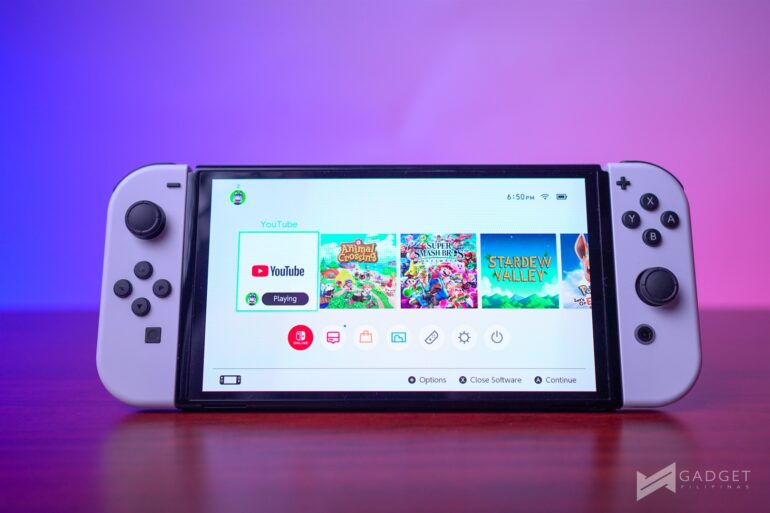
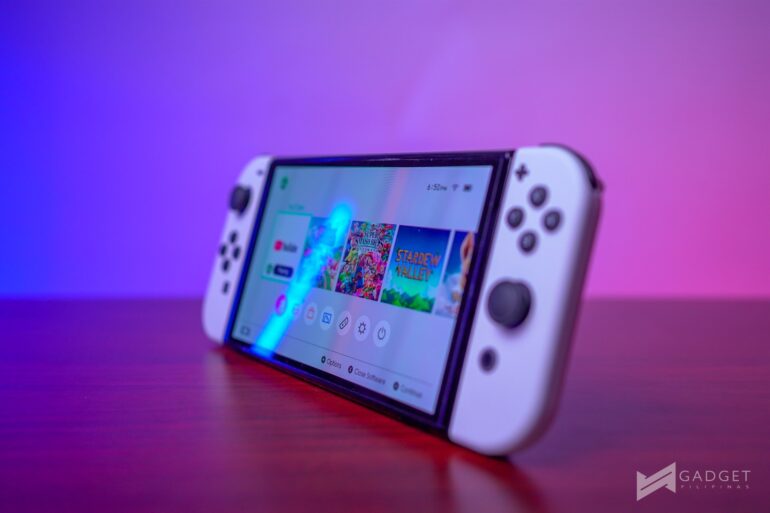
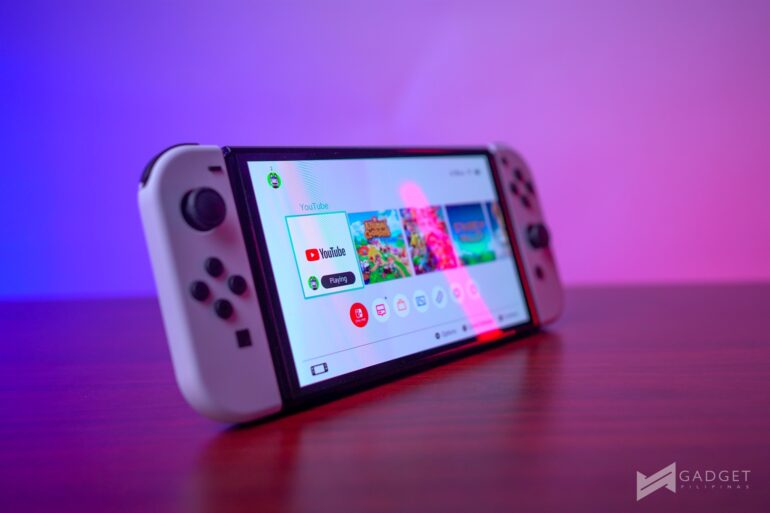
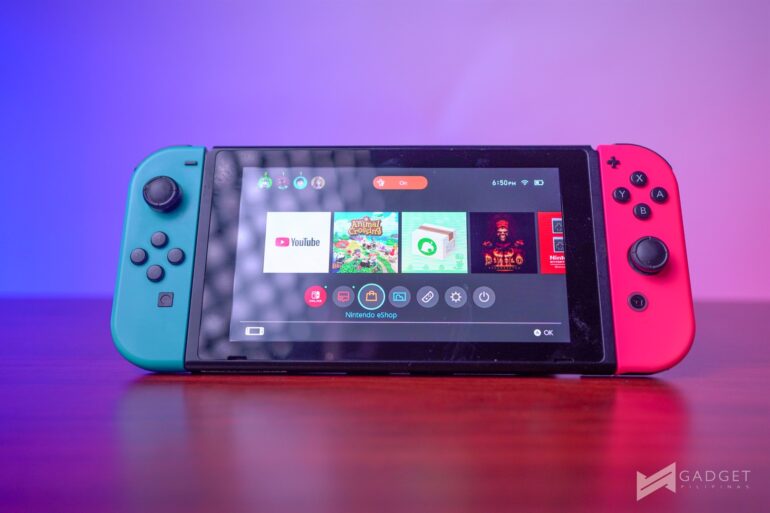
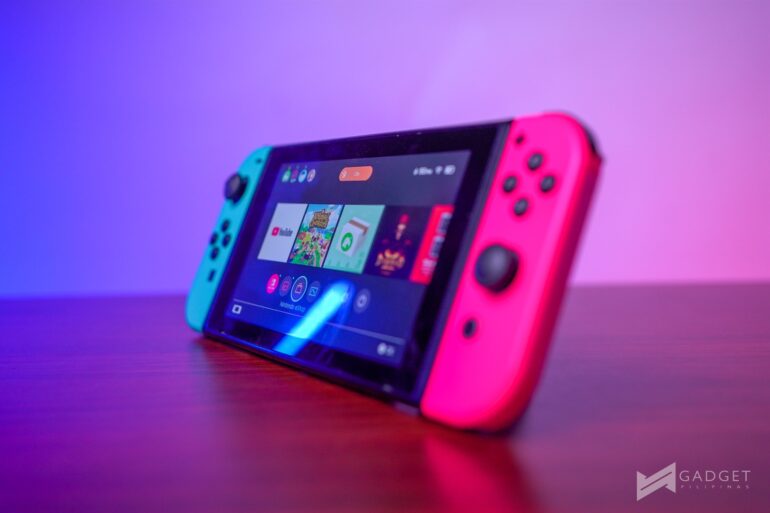
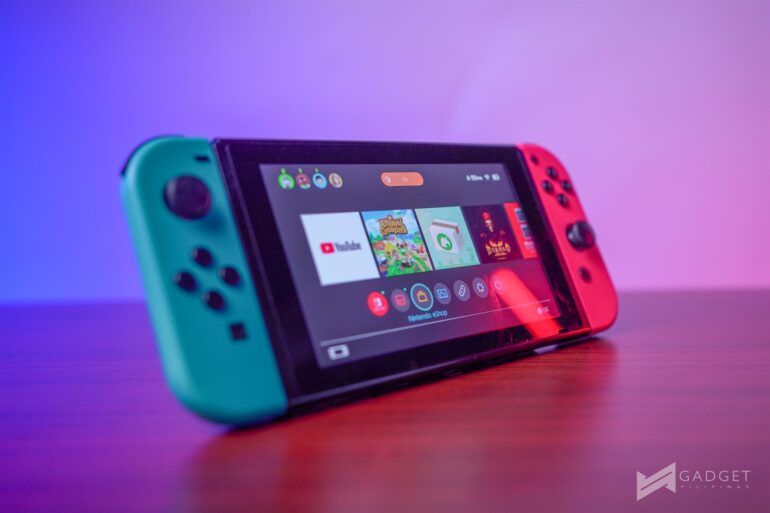
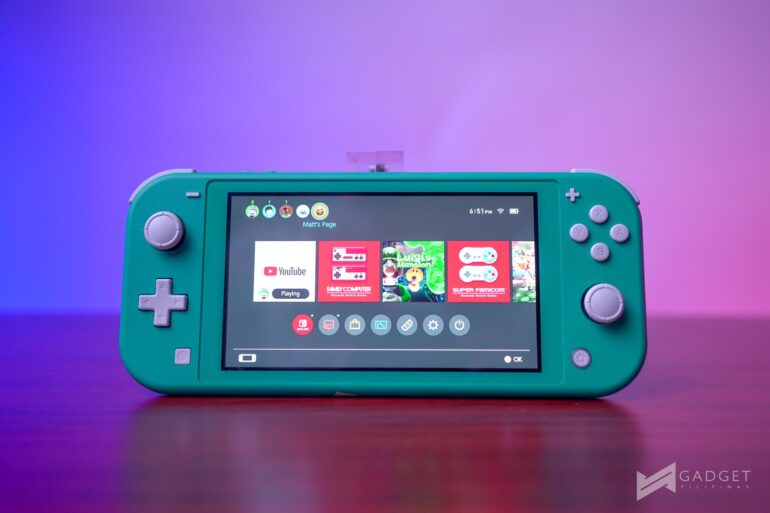
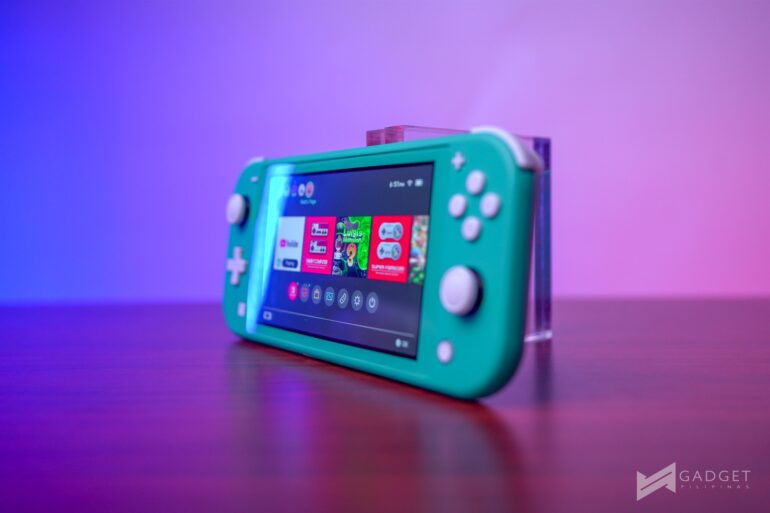
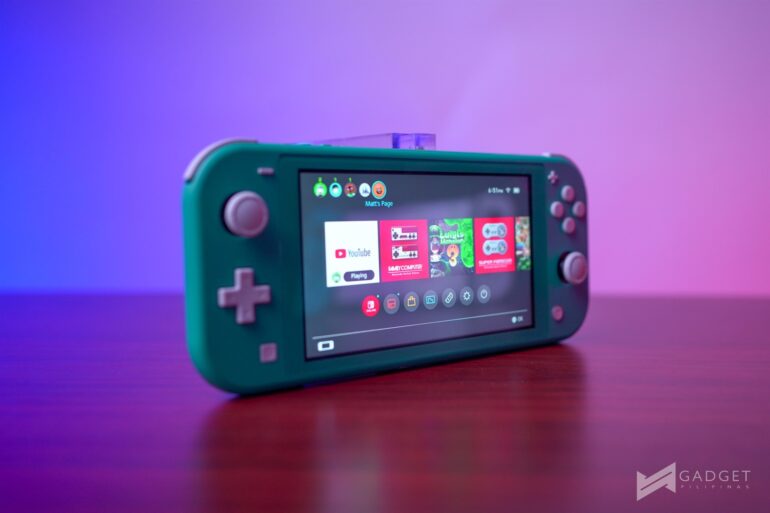
While this is the case, OLED displays are technically more battery efficient, which is the reason why Nintendo is confident to say that the battery life of the classic and Switch OLED have the same battery life at full charge (4-9.5 hours).
The first and Lite’s displays have the usual LCD, which sometimes gives “washout” colors on some games. This should be enough if you just really want to play games. There is a major advantage for the first Switch over Switch Lite as it can be docked and play games at 1080p on bigger TVs. If you happen to have a TV with an OLED display, you’ll be able to further appreciate the games you’re going to play as you’re given the full spectrum of colors of games as intended by the developers. Plus points for the Switch OLED though as you’re basically hitting two birds with one stone: play games with better colors and view on handheld, tabletop or even docked if you have an OLED display. Unfortunately, however, none of the Switch models can output to 4K, which can be very disappointing for a lot of gamers.
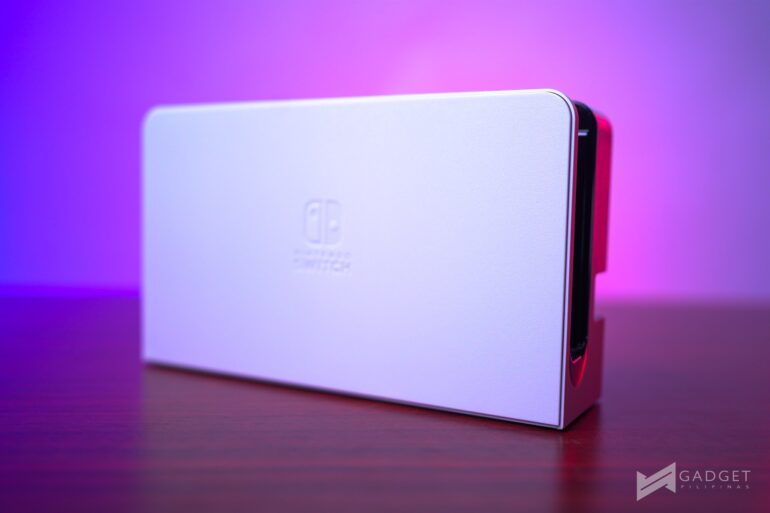
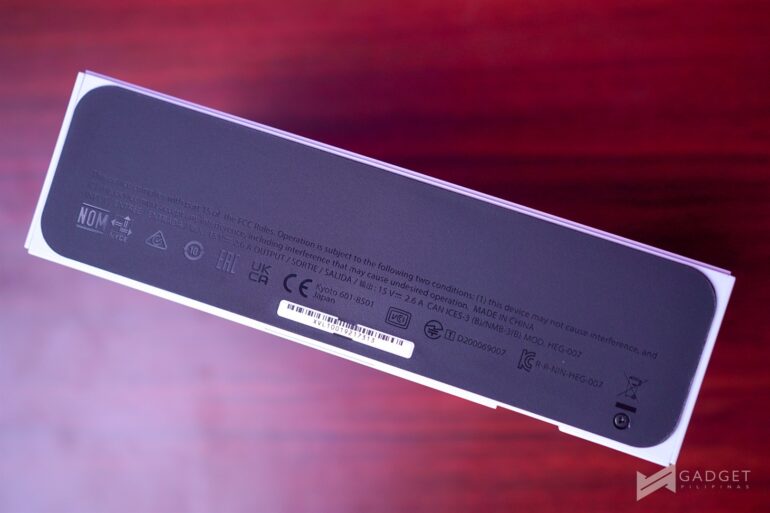
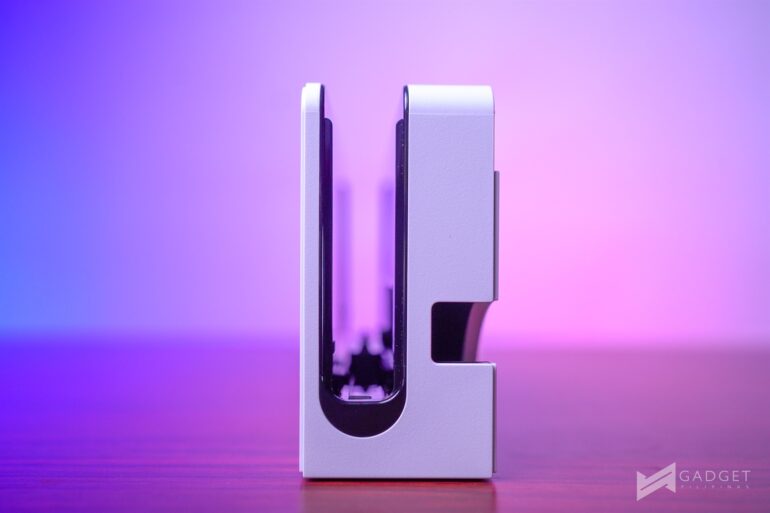
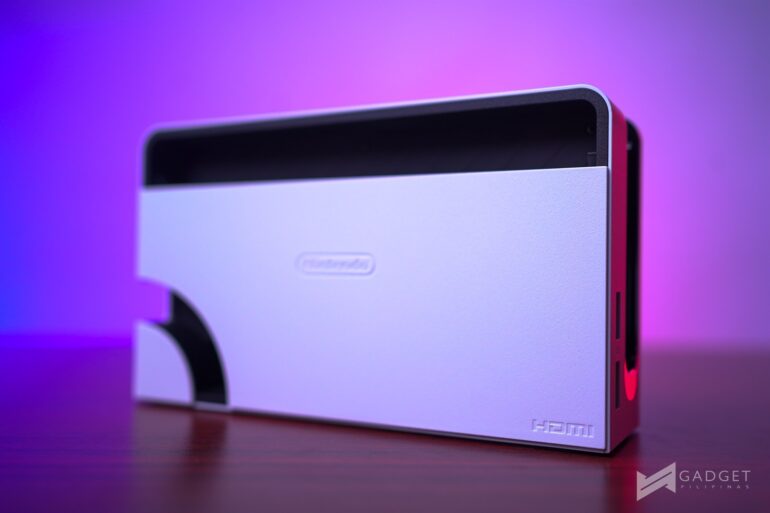
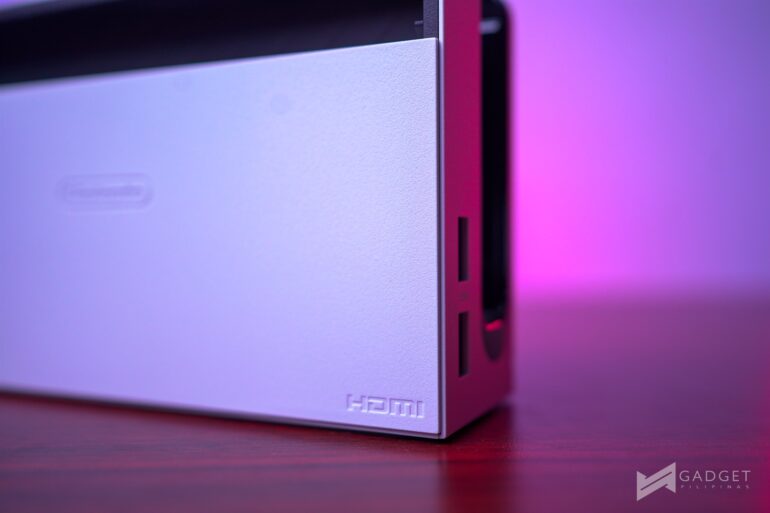
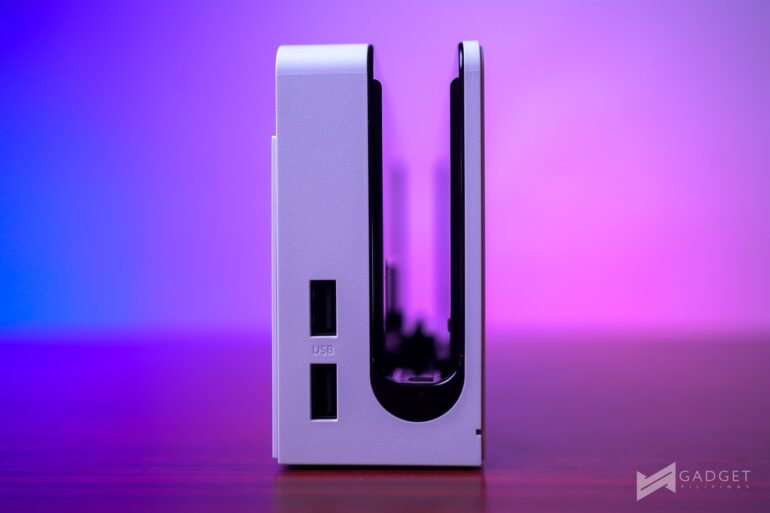
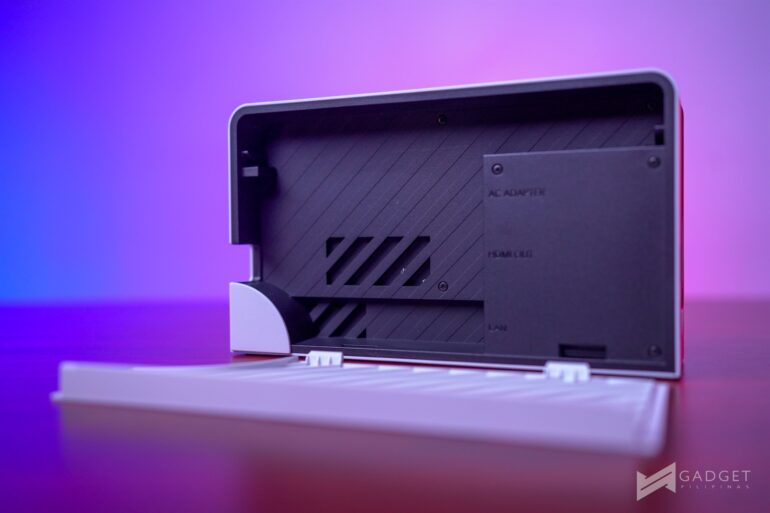
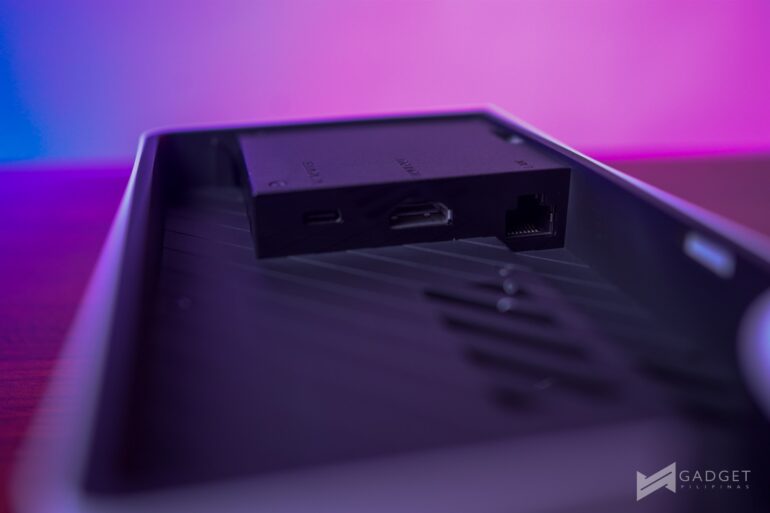
If display is a major feature you’re looking at, there is no doubt that the Switch OLED is the best you can get at the moment. You get fantastic display performance on a handheld device, and can even output to Full HD to a television or monitor of your choice. If this isn’t a concern, however, you’re better off with either a Switch Lite or the classic Nintendo Switch.
Hardware
All Nintendo Switch models are powered by a Custom Nvidia Tegra X1 chip. This means that you’ll exactly get the same level performance of your games regardless of model you pick. Obviously, Switch OLED does not have an advantage over other models in terms of performance because – as earlier mentioned – it is powered by the same chipset. There is no difference in gameplay performance based on my experience.
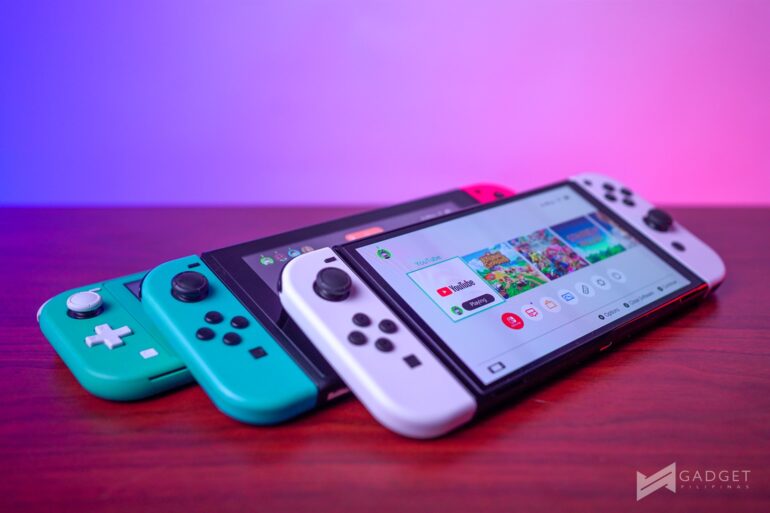
In terms of RAM, everything is packed with a 4GB RAM. Storage-wise, the new Switch OLED has twice the size of the classic and Switch Lite. This makes it another compelling reason to buy than the two previous models.
In this regard, hardware/chipset is an insignificant factor in your purchase consideration.
Audio
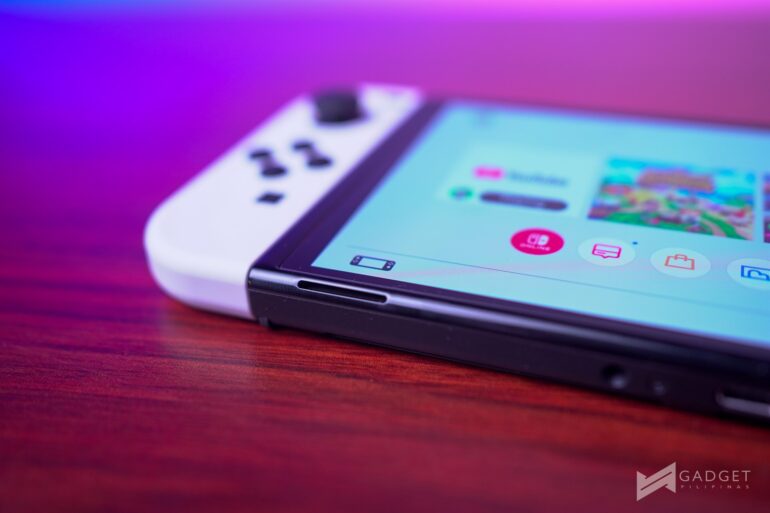
Audio performance is one of the aspects that the two previous Switch models is somewhat lacking. The new Switch OLED’s audio system had undergone a redesign, which somehow enhanced its performance. It is indeed the case based on my audio test. At 44.2db room ambient sound scale, the Switch OLED managed to not just sound louder but also better. It has more depth, clarity and definition by my standard, and it definitely stood out compared to the two previous Nintendo Switch.
- Nintendo Switch OLED – 82db (44.2db ambient)
- Nintendo Switch – 74.1db
- Nintendo Switch Lite – 71db
All models can now pair with your existing Bluetooth audio devices, thanks to its latest software update. This eliminates the need to buy third party dongles that would allow users to connect wireless audio devices.
Price
As the new Switch OLED is the latest among the three models and technically has better specs, it is the most expensive. It is worthing noting that it is still cheaper compared to the original Switch when it was first made available in the Philippines. Unfortunately, while it is “officially” priced at PhP19,999, I have not seen any video game retailer in the Philippines that’s selling it without any bundled game or accessories. This will make it more difficult for more people to buy the new Switch without any reservations. This is probably one of the reasons why Switch OLED stocks in the Philippines is still high based on my observations.
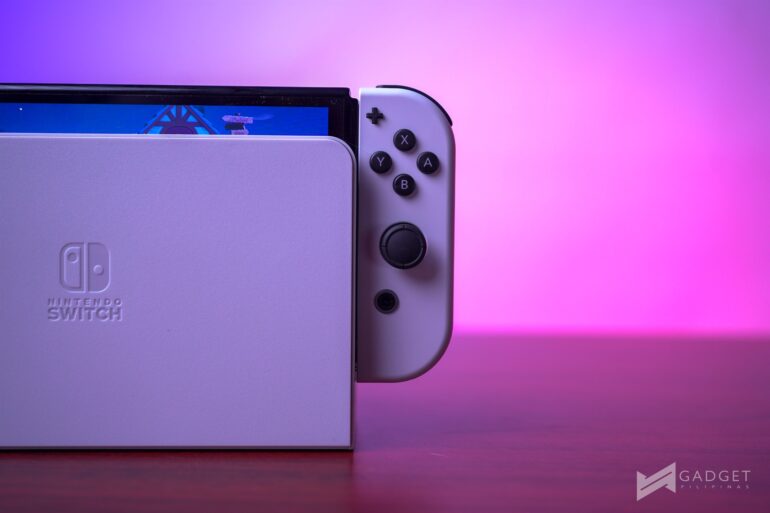
The classic Switch and Switch Lite are significantly more affordable than the new Switch OLED at PhP15,395 and PhP9,850 respectively, which make the consoles more financially”accessible” to a lot of people.
So, what now?
While the Switch OLED is the best Switch available in the market right now, you should consider the following before buying one:
- If your budget does not fit yet you want to be able to play the latest Switch game, get the the Switch Lite instead. If its limitations like no detachable joy-cons, incompatibility with couch co-op games, no TV mode and few more I mentioned in this article are things do not actually mind, Switch Lite is the way to go than Switch OLED or even the first version.
- If display and mobility are major considerations, Switch OLED is the best option for you as long as you can afford one.
- If you want to experience all Switch games without any limitations, the original Switch can give you all features and benefits you need.
Catch our full coverage of Nintendo Switch OLED on our website and YouTube channel. Our sister website, One More Game, will also have their own line-up of content available for you to read.
Giancarlo Viterbo is a Filipino Technology Journalist, blogger and Editor of gadgetpilipinas.net, He is also a Geek, Dad and a Husband. He knows a lot about washing the dishes, doing some errands and following instructions from his boss on his day job. Follow him on twitter: @gianviterbo and @gadgetpilipinas.

